“Tourists prefer the trendy colors, yellow and blue. Pacing fancies, hotels are painted yellow and blue. Blue wins. All women want to be fashionable. All women wear blue, except the English, those learning to swim, and the Germans, who are dedicated to green.”Du côté de la côte [Along the Coast] (Agnès Varda, 1958)
Aug
9
yellow
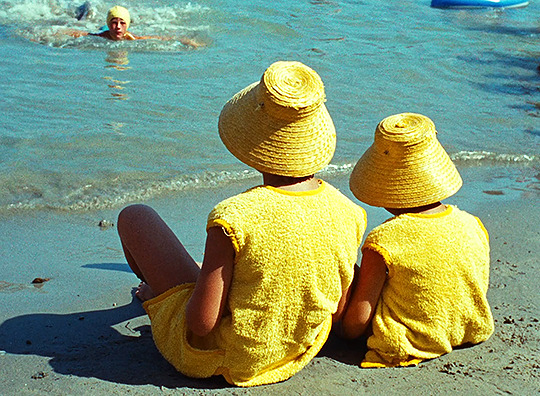
Two people, one big one small, in identical canary yellow robes and straw sun hats on the beach (more here). DPs: Quinto Albicocco & Raymond Castel.
Yellow, in food or fashion*
– narrator
* the Bales 2025 Film Challenge for August is not date-related but lists, for the most part, the colours of the rainbow.
bales2025filmchallenge
“Just when I really needed a raincoat, he returned to my side. It would be so great if it could rain forever.”墮落天使 [Do lok tin si / Fallen Angels] (Wong Kar-Wai, 1995)
Aug
7
yellow
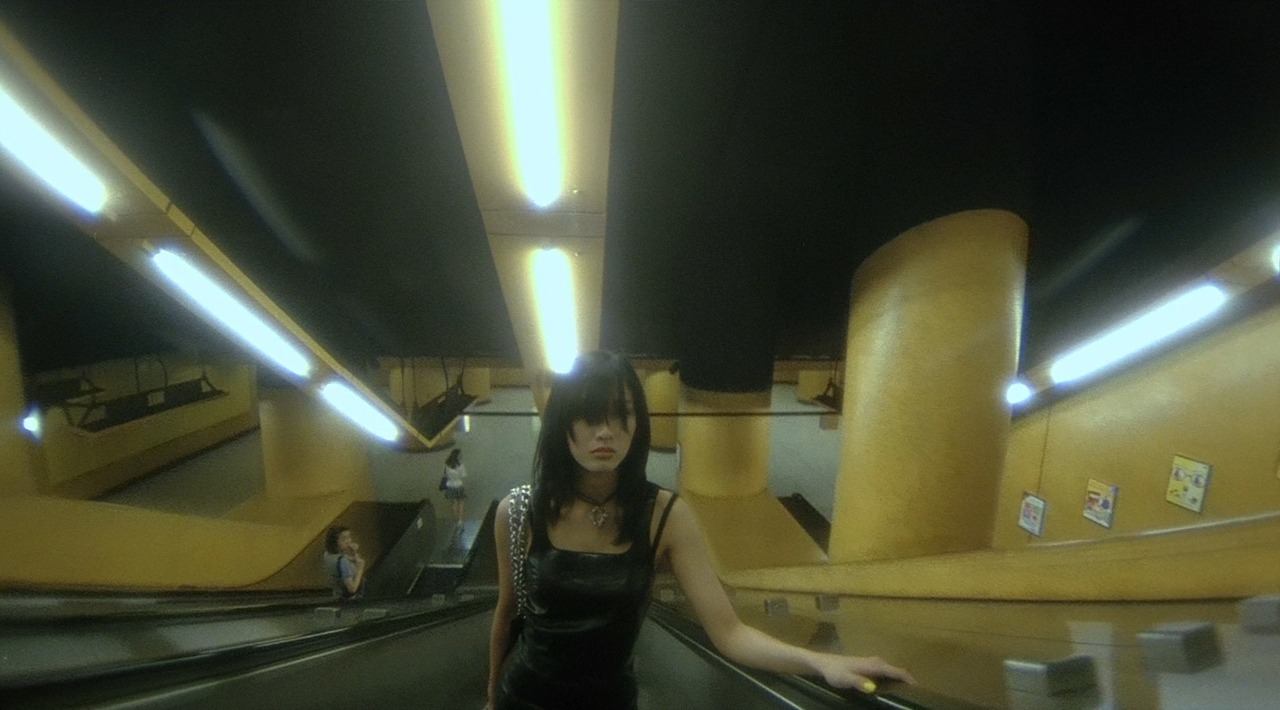
The killer's agent (Michelle Reis) rides an escalator in a yellow and black underground station. She wears an all-black outfit and yellow nail polish (via). DP: Christopher Doyle.
Yellow: a building or structure*
– Punkie
* the Bales 2025 Film Challenge for August is not date-related but lists, for the most part, the colours of the rainbow.
“Tell me the truth!” Ovoce stromů rajských jíme [We Eat the Fruit of the Trees of Paradise] (Věra Chytilová, 1970)
Aug
6
orange
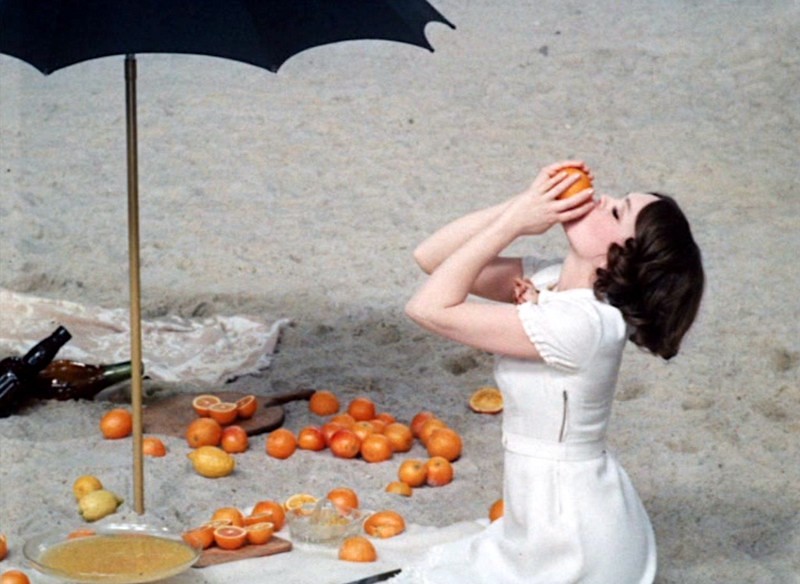
Eva (Jitka Novákova) devouring oranges under a black umbrella (via). DP: Jaroslav Kučera.
Orange, food or fashion*
– choir
An allegorical, psychedelic retelling of Genesis 3 and the Fall of Man
* the Bales 2025 Film Challenge for August is not date-related but lists, for the most part, the colours of the rainbow.
“When we began to compare the typically American, typically European, and typically Russian films, we noticed that they were distinctly different from one another in their construction. We noticed that in a particular sequence of a Russian film there were, say, ten to fifteen splices, ten to fifteen different set-ups. In the European film there might be twenty to thirty such set-ups (one must not forget that this description pertains to the year 1916), while in the American film there would be from eighty, sometimes upward to a hundred, separate shots. The American films took first place in eliciting reactions from the audience; European films took second; and the Russian films, third. We became particularly intrigued by this, but in the beginning we did not understand it.” Эффект Кулешова [Kuleshov Effect] (Lev Kuleshov, 1918)
Aug
5
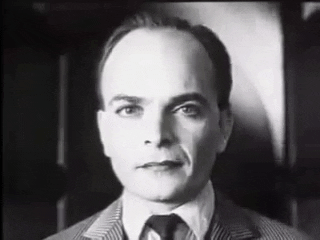
A closeup of a man, followed by a medium shot of a child in a coffin, then back to the man. Can you see how his expression changes? (via). DP: to be determined.
Celebrating Dia de Los Muertos [on November 1 and 2, of course]: a cemetery, coffin, or dead person*
– Lev Kuleshov, The Principles of Montage, from The Practice of Film Direction (pp. 183-195) (source)
Director Lev Kuleshov explains what happens when a scene is followed by a reaction shot. Depending on the preceding image, the viewer projects an emotion onto the performer's facial expression. In his most famous montage, made up of existing footage – because property is theft, we see matinee idol Ivan Mosjoukine “react” to a bowl of soup, a little girl in a coffin, and a woman sprawled out on a divan.
* the Bales 2025 Film Challenge for August is not date-related but lists, for the most part, the colours of the rainbow.
“Today is the first day of a life of sacrifice.” 地獄門 [Jigokumon / Gate of Hell] (Teinosuke Kinugasa, 1953)
Aug
4
orange
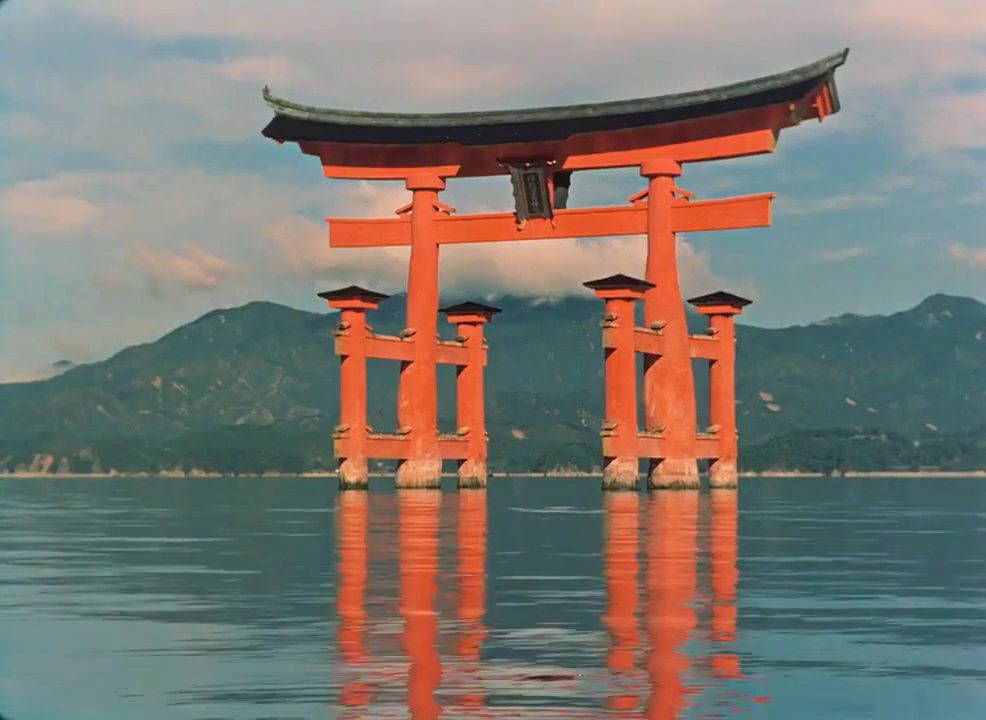
The shrine's torii as seen in the film. Vermilion contains mercury, which not only acts as a preservative but is also believed to ward off evil. DP: Kōhei Sugiyama.
Orange: a building or structure*
– Moritoo Endō
Partially filmed near the 厳島神社 (Itsukushima Shrine) with its striking vermilion torii.
Shot on Eastmancolor, relatively cheap and globally available, and influenced by Hollywood colour melodramas of the time, in particularly Rudolph Maté's Mississippi Gambler (1953) (source), and in its turn greatly influenced the implementation of colour in global cinema to come.
Jigokumon won two Academy Awards in 1955, for Best Costume Design and Best Foreign Language Film.
* the Bales 2025 Film Challenge for August is not date-related but lists, for the most part, the colours of the rainbow.
“She looked at the red shoes, for she thought there was no harm in looking. She put them on, for she thought there was no harm in that either. But then she went to the ball and began dancing. When she tried to turn to the right, the shoes turned to the left. When she wanted to dance up the ballroom, her shoes danced down. They danced down the stairs, into the street, and out through the gate of the town. Dance she did, and dance she must, straight into the dark woods.” The Red Shoes (Michael Powell + Emeric Pressburger, 1948)
Aug
3
red
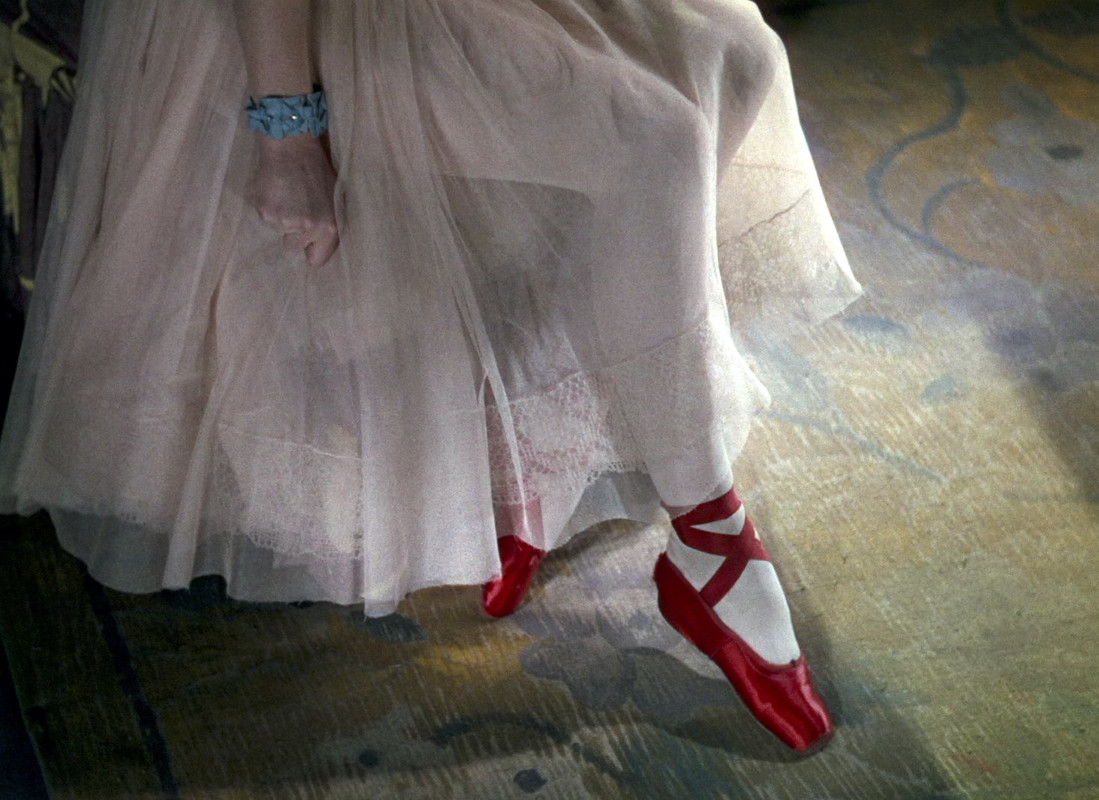
A ballerina's lower body in focus. She wears a long tulle off-white dress, slightly sheer, with her white stockings showing through slightly. Part of her right lower arm is visible, the hand clutched, a turquoise bracelet on the wrist. What stands out most are her ruby red ballet shoes that appear to move away from her. The backdrop is a dull, washed out carpet. DP: Jack Cardiff.
Red: best use of red in food or fashion*
– Hans Christian Andersen, De røde Skoe (1845, tranl. Jean Hersholt, 1949), via
Another one of The Archers' #Technicolor extravaganzas. This time, not to wow the worn-down post-war black-and-white audience, but as an an active storytelling instrument.
Built around Hans Christian Andersen's haunting tale De røde Skoe (1845).
* the Bales 2025 Film Challenge for August is not date-related but lists, for the most part, the colours of the rainbow.
Mitt hem är Copacabana [My Home Is Copacabana] (Arne Sucksdorff, 1965)
Aug
2
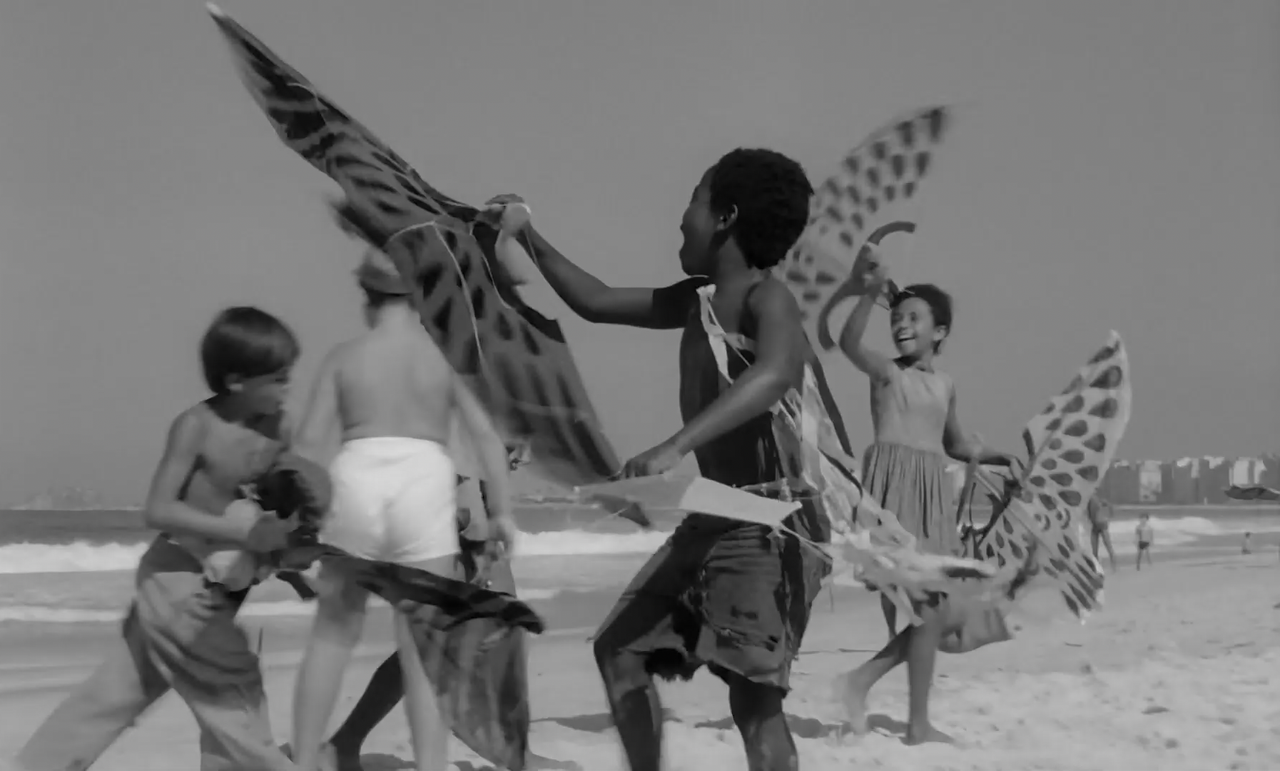
The favela children on the beach, playing with kites and mingling with the rich kids. DP: Arne Sucksdorff.
A kite in celebration of 浜松まつり, the Hamamatsu Kite Festival, which takes place on May 3–5*
Favela kids steal kites and sell them on in this Copacabana-set Nordic drama.
Toninho Carlos de Lima, Rico in the movie, was not a homeless kid from the favelas but lived in a house with his family when he was send to Sweden to promote Mitt hem är Copacabana. A wealthy Swedish couple offered to adopt him, and his natural mother reluctantly gave in hoping to prevent a life of crime for her son (source). That too, dear reader, is colonialism.
* the Bales 2025 Film Challenge for August is not date-related but lists, for the most part, the colours of the rainbow.
“It's just a dream, Agnes.” Viskningar och rop [Cries and Whispers] (Ingmar Bergman, 1972)
Aug
1
red
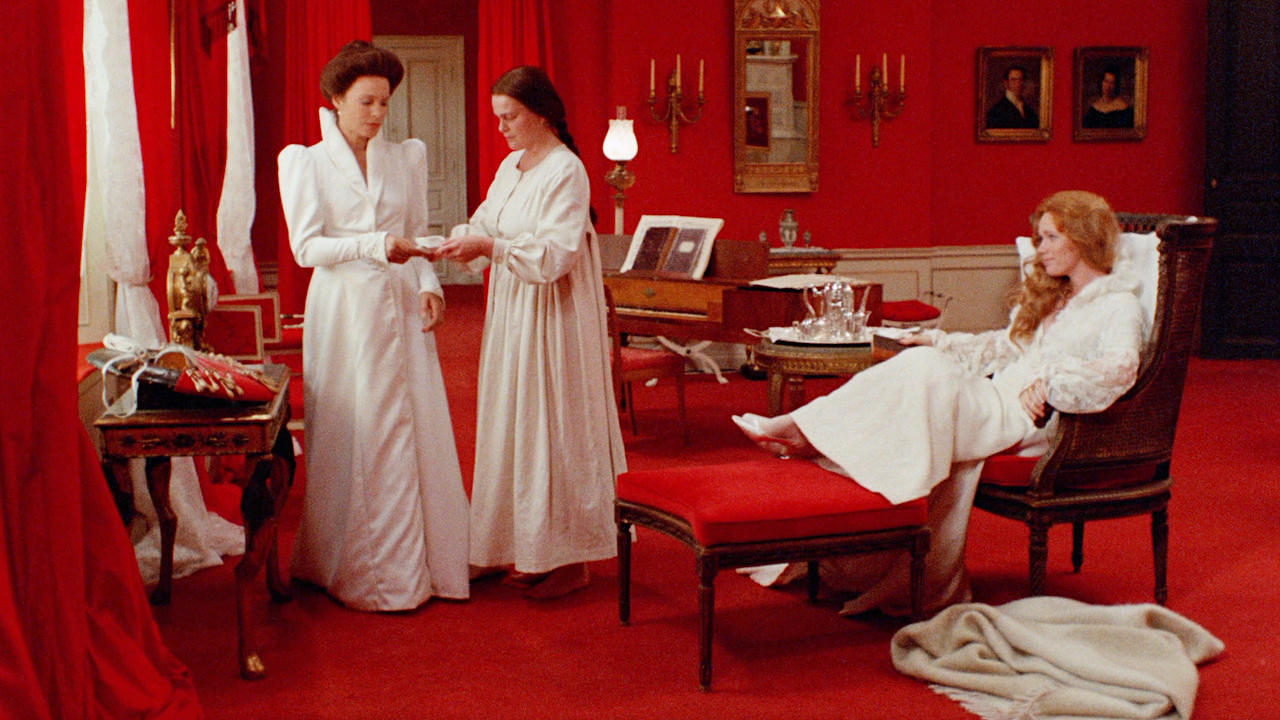
The three sisters in the red room (via). DP: Sven Nykvist.
Red: a building or structure*
– Anna
Red as an expression of inner and outer worlds. Even the scene transitions are red.
* the Bales 2025 Film Challenge for August is not date-related but lists, for the most part, the colours of the rainbow.
“Du, Wolf, nächsten Sonntag — ?” Menschen am Sonntag [People on Sunday, a Film Without Actors] (Robert Siodmak, Edgar G. Ulmer, Rochus Gliese, Curt Siodmak + Fred Zinnemann, 1929)
Jul
31
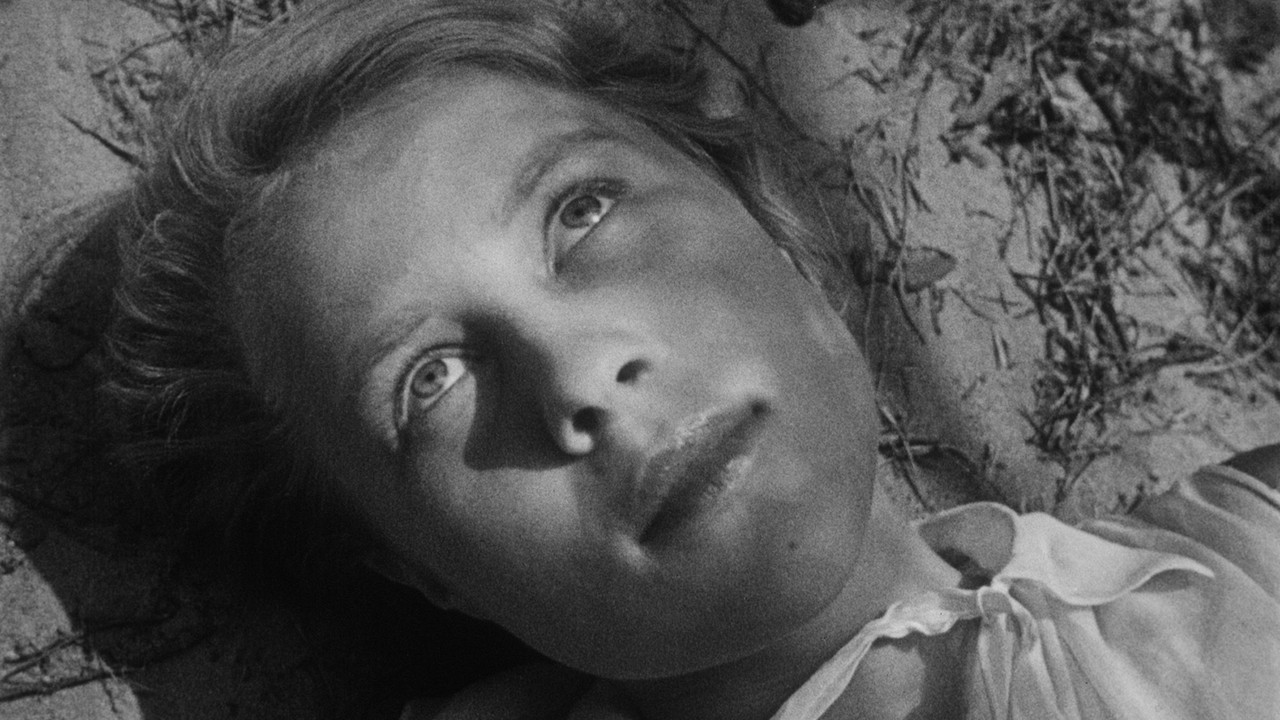
Brigitte Borchert savours her Sunday. The workweek is still lightyears away (via). DP: Eugen Schüfftan.
Someone goes to work*
– title card
Berliners rest on Sunday, we still do. People lounge in the many parks, and on the shores of the city's many lakes. And then, it's Monday.
Released in 1929, according to Atlas Film, who restored this important Weimar classic long before Criterion put their grubby hands on it.
* the Bales 2025 Film Challenge for July is, for unknown reasons, mostly not date-related and follows some sort of vacation narrative.
Το κορίτσι με τα μαύρα [To koritsi me ta mavra / A Girl in Black] (Mihalis Kakogiannis, 1956)
Jul
30
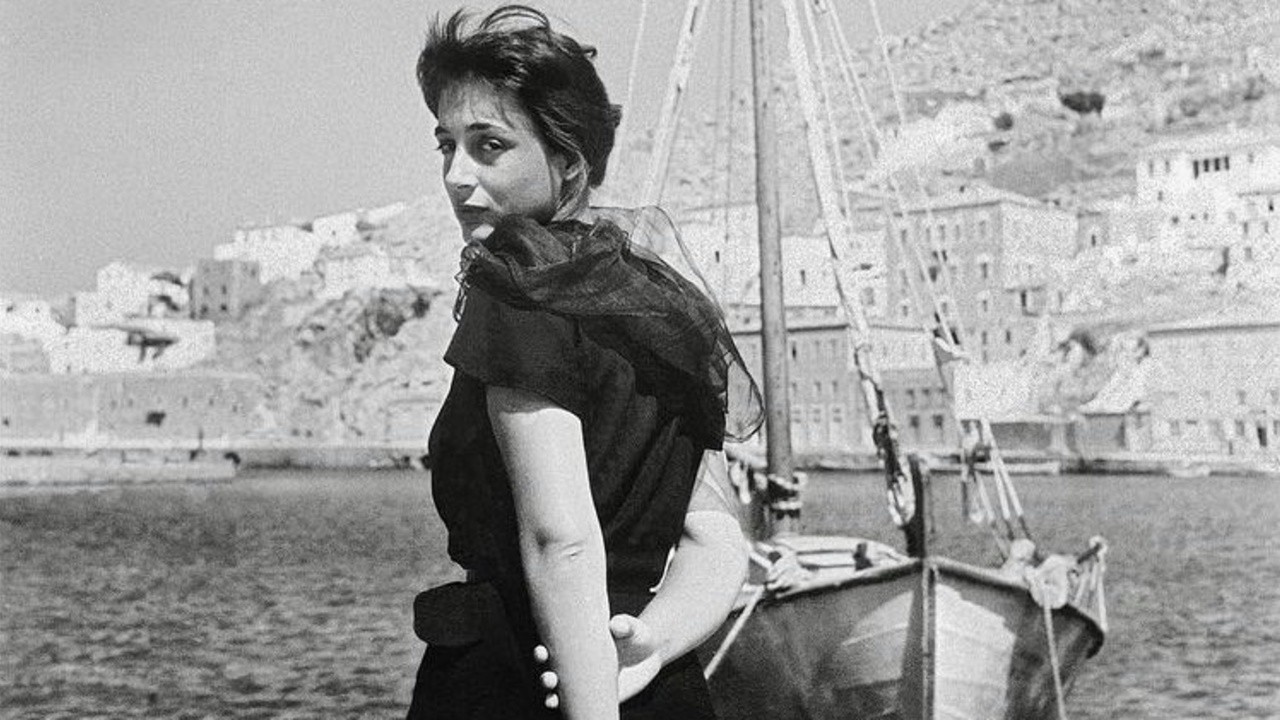
Marina (Ellie Lambeti) in the port of Hydra. DP: Walter Lassally.
Someone is sad, or cries*
A wealthy Athenian writer on holiday on Hydra falls for the morose Marina (Ellie Lambeti), one of the daughters of his widowed innkeeper, causing disruption in the close-knit island community.
* the Bales 2025 Film Challenge for July is, for unknown reasons, mostly not date-related and follows some sort of vacation narrative.